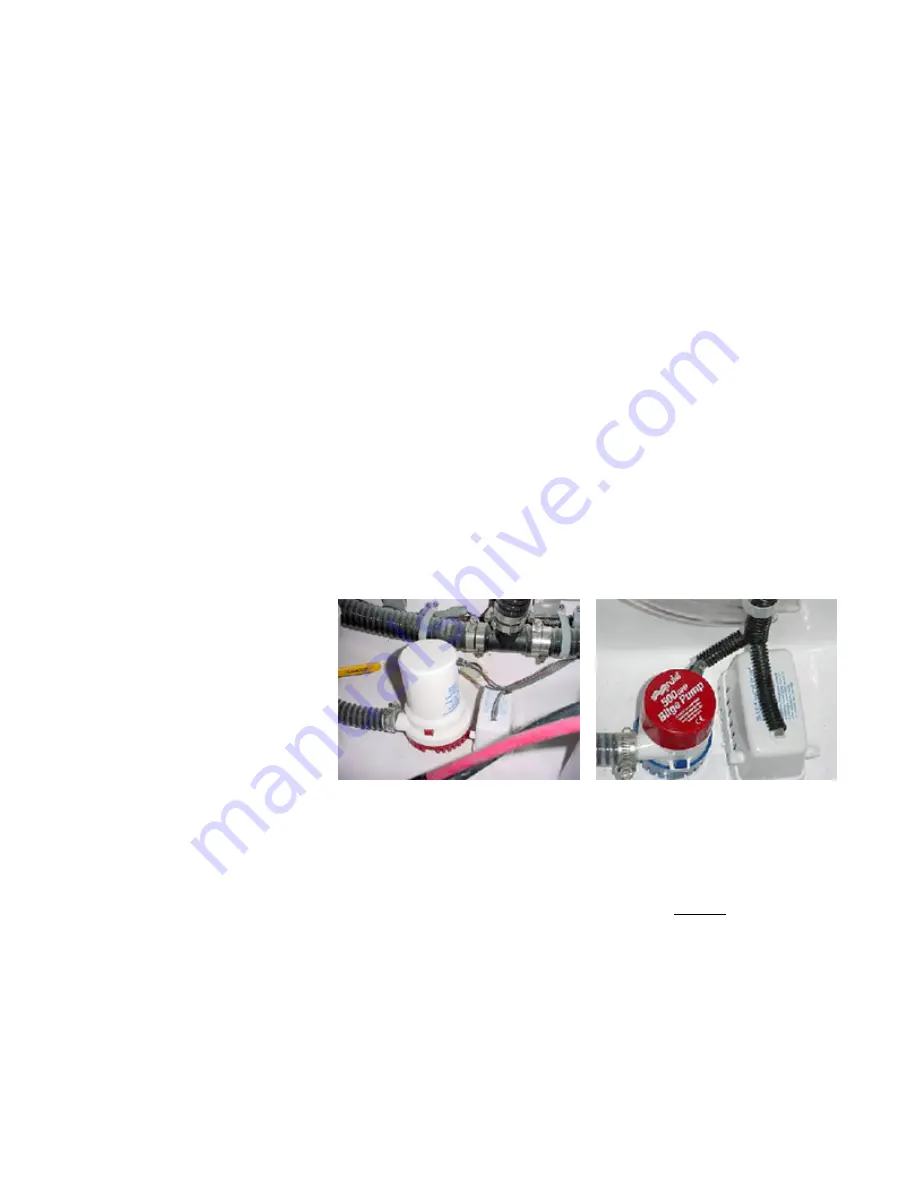
maintenance of their product. When in doubt, always defer to the engine manufacturer’s instructions and/or
recommendations.
Fuel / Oil Leaks
The fuel tank is vented overboard and the vent should be inspected for obstructions regularly. Verify that all of
the fuel hoses remain properly secured and located according to NMMA standards. Inspect all hose clamps and
fittings to ensure they are double clamped where needed and that there are no fuel leaks in any of the hoses.
Also, inspect the oil system, if applicable, and ensure that the oil tank and hoses remain properly connected and
secured.
If you notice a fuel odor or see fuel in the bilge, there may be a leak somewhere in the fuel system. Correct any
fuel leaks before operating the vessel.
Caution: If at all possible
, any fuel tank and or fuel system repair should be handled by your
Pro-Line dealer’s service department or by another qualified service professional.
Sea Water System
Bilge Pumps
The boat is equipped with two (2) bilge pumps; separate switches on the switch panel operate each pump. The
locations of the two (2) bilge pumps and the labeling of the bilge pump switches are as follows:
•
Aft Bilge – This 1500 gph pump is located in the aft bilge and is accessible via the bilge hatch.
•
Fwd Bilge - This 500 gph pump is installed below the cabin floor and is accessible via the round
access pie that is installed next to the cabin step.
There are 2 steps in properly
checking the bilge pumps. First,
turn the on bilge pump at the
instrument panel by pressing the
applicable bilge pump switch to the
on or forward position. When the
bilge pump switch is in the on
position, the switch light should be
illuminated. To see if the bilge
pump is operating, open the hatch
over the applicable bilge pump and
listen to hear the bilge pump
running.
Aft bilge pump and float switch
Forward bilge pump and float switch
Second, turn the bilge pump off at the instrument panel and check the bilge pump float switch. Each pump is
equipped with an automatic float switch (white box) that is mounted next to the bilge pump. As long as your boat
is equipped with an operable battery, each pump will operate independently when water is present in the area.
Each float switch is equipped with two plastic knobs located on either side of the switch. Turn either one of the
knobs to raise the float to engage the bilge pump. If the pump comes on, the automatic float is operating
properly. It is recommended that you check the operation of each automatic float switch monthly.
If for some reason the indicator light on your bilge pump switch comes on, check your bilge for water. It is not
uncommon for rain water or water from washing your boat to accumulate in the bilge. Standing water will activate
the automatic float that is connected to the bilge pump. If you notice your pump running frequently during your
day on the water, you should check the thru hull fittings, hose connections, etc. for any possible leaks.
Keep the bilge area clean and free from debris that could clog ports or inhibit float movement. Also, keep the
battery (starboard) that provides power to the bilge pump charged. If the battery is not charged and flooding
occurs, the boat could swamp causing damage and possible loss of life or property.
23
Summary of Contents for 2009 26 Express
Page 2: ...ii...
















































